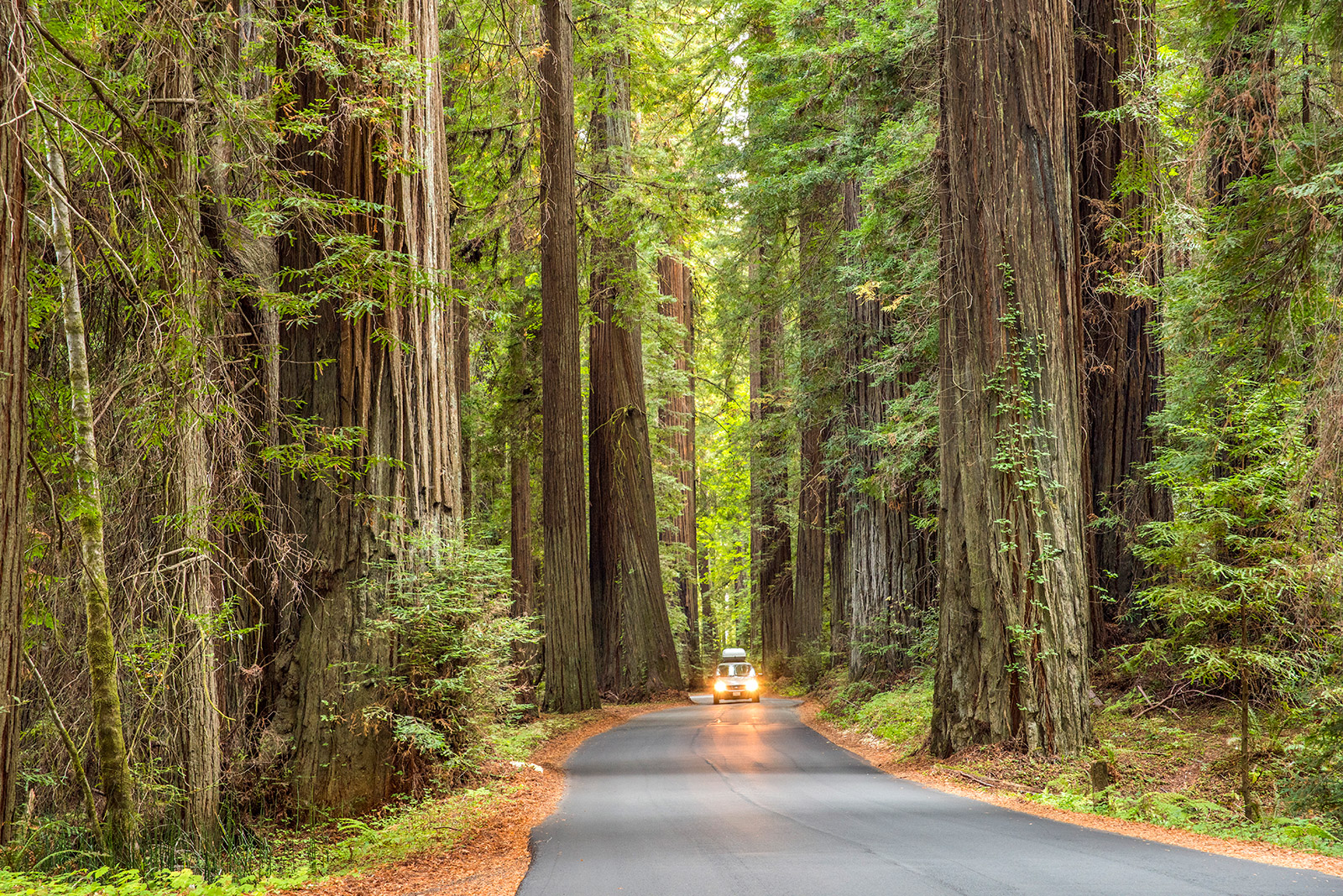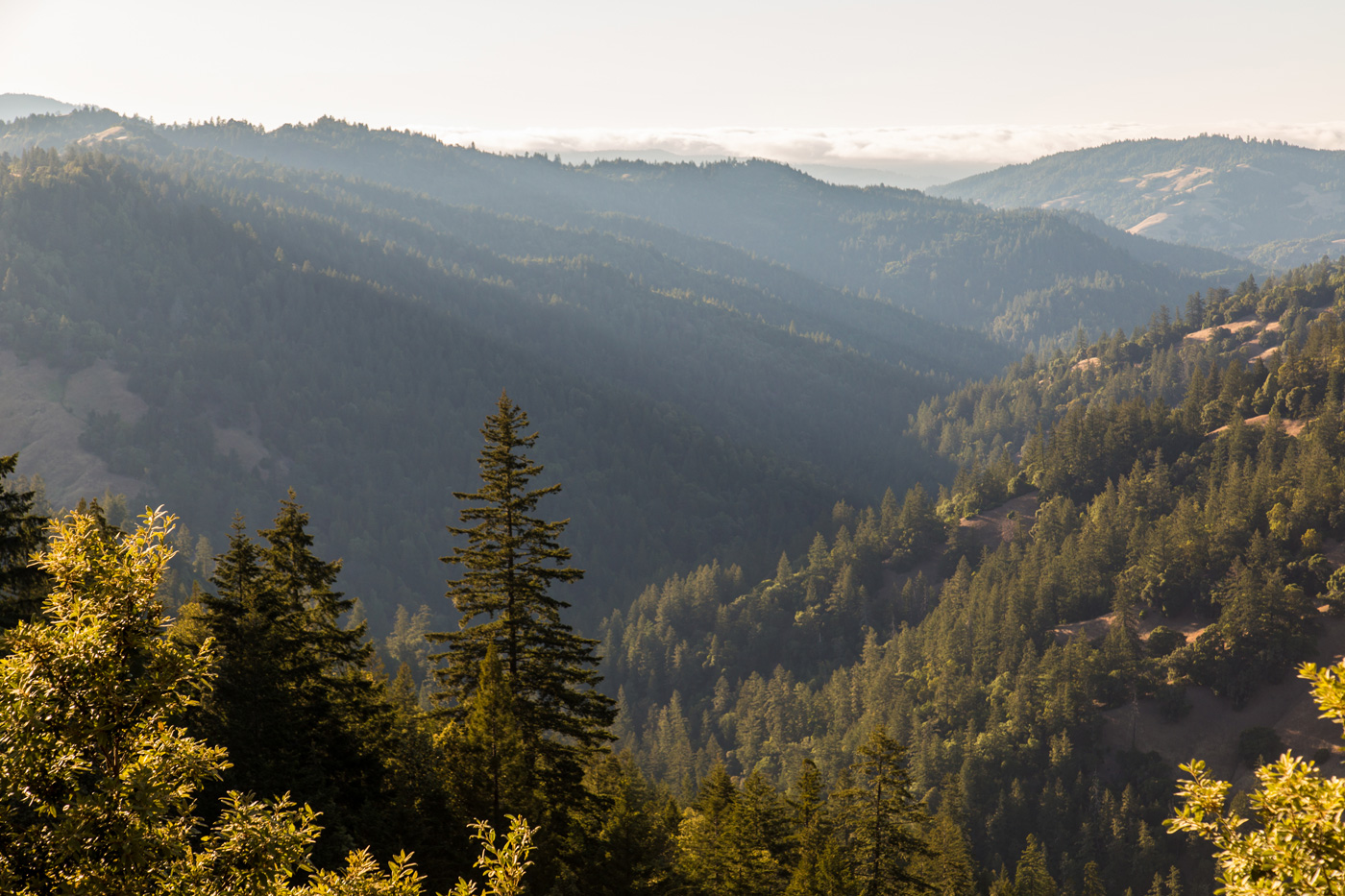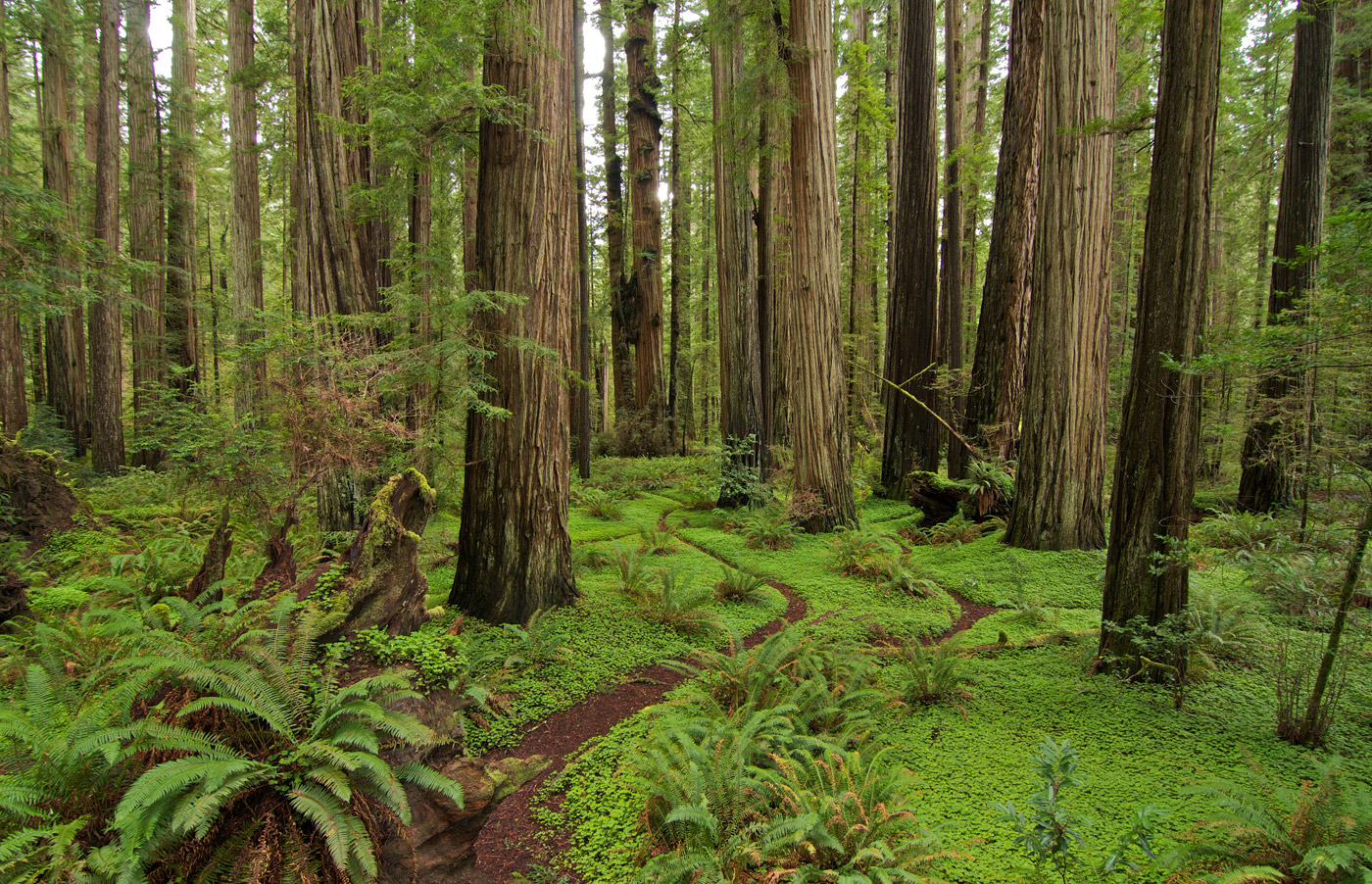Our land acquisition efforts have protected more than 225,000 acres.
The League has been protecting redwood forests for the creation of parks and protected lands since its founding in 1918. This work is accomplished through real estate transactions negotiated with willing sellers. As a nationally accredited land trust, the League follows rigorous, transparent standards and practices in our land negotiations. Over its history, Save the Redwoods League has negotiated hundreds of purchases with landowners, and protected more than 225,000 acres in the coast redwood and giant sequoia ranges.
In 2018, the League adopted its Centennial Vision for Redwoods Conservation that calls for:
…a redwood forest of the scale and grandeur that once graced the California coast and Sierra Nevada, protected forever, restored to grow old again, and connected to all people through a network of parks and protected areas that inspire the world with the beauty and power of nature.
To deliver on this vision, the League has set a goal to double the acreage of protected coast redwood forest to 800,000 acres over the next 100 years through purchasing more land at a faster pace, which will mean shifting the trajectory of large areas of redwood forest from commercial timber production towards restoration management that is focused on creating the old-growth redwood forest of the future.
The League’s approach

There are many different approaches to achieve the goals of preserving and protecting redwood forests. Beyond land conservation transactions, some seek to prevent timber harvest through legislation, regulation, activist protest, or legal challenges. All of these strategies and tactics are pieces of the complex conservation puzzle. The League’s strategy, like that of the land trust community around the country, has always been to purchase land from willing sellers.
Historically, this meant that the League built and sustained relationships with timber company owners in order to acquire stands of old-growth redwood forests at a time when the concept of land conservation was in its infancy. Today, the League continues to build relationships with potential sellers. In many instances, the League’s conservation goals are not aligned with management goals of these landowners. As such, we build our relationships on the basis of the League’s reputation to deliver as a buyer and to negotiate in good faith with landowners.
Professionalism and trust are key elements in any business relationship, and the League prides itself on its excellent track record of negotiating and closing large and often risky land transactions. This ability to complete land transactions is largely due to the generosity of our donors and funding partners, who have consistently provided the funding behind these purchases.
Recent examples of land purchases include the Russian River Redwoods (2023), Atkins Place (2022), and Lost Coast Redwoods (2021). You can see a comprehensive list here.
Long term stewardship
The League’s primary function in the conservation equation is to finalize the deals that take redwoods out of harm’s way, absorbing the risk and cost of negotiating a land acquisition and interim stewardship of redwood forestland, pending conveyance to a long-term conservation steward. Throughout our history, most of the land that the League has purchased has been transferred to California State Parks, and to other state, federal, regional or tribal entities and designated as parks for all to enjoy. To date, this has resulted in the creation or growth of 66 redwood parks and preserves throughout California that collectively are visited by more than 30 million people every year.
While the League is not a long-term owner of redwood land—conveying to entities better suited for long term conservation land management allows us to free up capital resources for the next transaction—we often own land for several years and advance critical stewardship to set the land and our partners up for success. And we continue to work with our stewardship partners long after the transactions are complete. This is where our Connect and Restore work comes into play. Projects like Redwoods Rising, Grove of Titans, and Montgomery Woods are examples of our work to advance comprehensive restoration and public access investments on League protected lands after the transaction.

Conservation easements
Sometimes, the League is able to protect redwood forests without acquiring the land outright. We do this through the purchase of a conservation easement. This is a negotiated, legal agreement between a landowner and a land trust or conservation entity that permanently limits certain uses of the land in order to protect certain values.
In other words, we work with a private landowner who is interested in making sure that their land will remain a sustainably working forest without any threat of being subdivided or developed. In return, the landowner can either receive payment for giving up the right to do certain things on their property (e.g. develop it, subdivide it, clear the forest for other uses, etc.). All of this means that the landowner can continue to own and manage the land or sell it to whomever they want with the confidence that the resources protected by the conservation easement will stay protected.

The evolution of our approach
When the League was founded, more than half of the old-growth redwood forest had already been harvested. Early leaders began their work hoping to save what they called “representative stands” of old growth before they were all cut down. That said, there was a growing understanding that scale mattered. The League in its early years made large land purchases that led to the creation and expansion of iconic parks such as Prairie Creek Redwoods State Park, Humboldt Redwoods State Park, and Jedediah Smith Redwoods State Park.
The purchase of more than 24,000 acres of cutover redwood forest in the Mill Creek watershed in 2003 marked a distinct shift in direction and philosophy. Having protected most of what remained of the old-growth redwoods, the challenge became linking those islands of protected groves across a healing forest ecosystem. After the old growth was harvested across 95% of the range, the forest still remained in the living landscape of ancient roots, creating an incredible opportunity to heal and restore the redwood forest at a large scale. Mill Creek launched a new era of acquiring young redwood forests before the next round of commercial clear cutting, actively managing the forest to heal the scars of logging roads and clear cuts, and surrounding the last of the old growth with a protected young forest that is rapidly growing back. This “landscape scale” approach reflects what we have learned about ecology, climate change, habitat connectivity and the extraordinary restorability of coast redwood forests.
When the League was founded in 1918, the conservation movement was in its infancy. Although there was great enthusiasm to protect these cherished landscapes, for the first several decades of the organization’s existence, there was little or no blueprint nor wide public mandate for the type of land protection we are able to undertake today. There was no Clean Water Act (1972); no National Environmental Policy Act (1970), no Endangered Species Act (1973), no Clean Air Act (1975) and no land conservation movement. All of the great national parks up until that time were already in federal ownership and so were “designated” as parks, not acquired. There was no precedent or widespread support for the the government buying private land for conservation.
Moreover, the conservation and environmental ethos that exists today didn’t exist then. Support for the economic growth that timber production fueled was at an all-time high. Coast redwood lumber was an astronomically valuable commodity with a seemingly endless supply to the point that by 1950, there were 252 sawmills in Humboldt County alone. Laws and tax incentives were designed to accelerate industrial-scale logging. In the face of an extraordinary rate of cutting, and a state and national government that supported it, early League leaders determined that the only way to protect the landscape was to buy it. And the only way to accomplish this was to work with charitable, wealthy individuals to purchase land directly from timber owners. The fact that many of these individuals had their own ties to the timber economy was inevitable; lumber was largely where all the state’s wealth was at the time.
Like the conservationists of today, the League’s founders (see note below) publicly decried the travesty of losing natural treasures for short-term private profit. The California State Parks Plan, developed by Frederick Law Olmsted Jr in the 1920s on behalf of the League, was the strategic plan for redwood conservation in that era, and called for publicly accessible state parks with “representative stands” of old growth up and down the coast redwood range. And acre by acre, Save the Redwoods League implemented the plan saving pockets of old-growth redwoods in State parks from the Oregon border to Big Sur.
While it is easy to look back on this philosophy with regret at the acres of forest that might have been saved with more public investment and a landscape-scale vision, we are nonetheless thankful that so much was protected in those early years. These are the magnificent parks that draw millions of visitors from around the world to stand in awe of the coast redwoods and giant sequoias, and drive that passion for their continued protection.
Today, and for the last several decades, Save the Redwoods League has been fully committed to preserving as much of the old-growth coast redwood and giant sequoia forests as possible, while also purchasing second-growth forests and setting them back on a path to their former glory. It is regrettable that, given the challenges we collectively faced, the League and its many colleagues in conservation weren’t able to save more than 5% of California old-growth forests. And because we know what we have lost, we are all the more determined to do the work necessary to see those forests one day fully protected and restored.
Note: The League has publicly disavowed the troubling beliefs of our founders and we are committed to integrating the values of diversity, equity, and inclusion into our organizational culture and conservation work.